Shrub Catalog
Contact the office for a current pricelist
Sales open in January and run through March
The tree supply is limited so make sure to purchase early
A shrub or bush is a small to medium-sized perennial woody plant. Unlike herbaceous plants, shrubs have persistent woody stems above the ground. A shrub can be taller than a bush, but not as tall as a tree and have thicker foliage than a bush. A shrub can be groomed, pruned, and shaped while a bush is usually left to grow wild. Shrubs can also been chosen for the edible fruits.
Buffaloberry
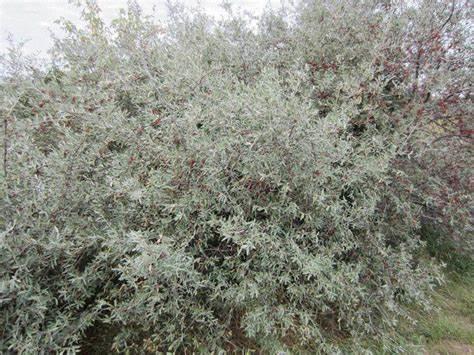
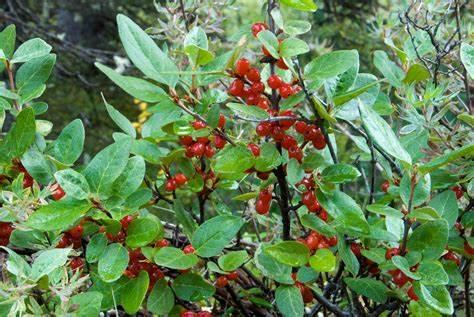
SHEPHERDIA ARGENTEA
- Leaves & Flowers
Buffaloberry is an upright, bushy, thorny-branched, thicket-forming, deciduous shrub of the Oleaster family. It is noted for its attractive silver-scaled leaves.
- Fruits:
This species produces berries that are popular for jam-making humans, plus it has bright red (female plants only) fruit which matures in fall.
- Fall Color:
The leaves have a silvery color.
- Growth Habit & Hardiness
The Buffaloberry, sometimes called a Bullberry, is a real reclamation champ. It is very adaptable to poor soil types, drought-tolerant, excellent at erosion control, and quite sturdy in high winds. Since it even grows in zones 3-9 it is commonly used in reclamation projects. The Buffaloberry is a deciduous small tree/ tall shrub that naturally forms an 8-14ft tall thicket which many enjoy as a natural windbreak, hedge, or privacy fence. It does produce suckers which can mean your thicket will continue to expand or you may choose to cut out the new growth. This hardy shrub tolerates soil that most plants considered infertile because it has a unique ability to fix and assimilate atmospheric nitrogen. This means that this plant not only does well in dry, moderately alkaline, and saline soils but it is actually a soil-fixer! (Grows in soil PH 5.5-8.) Although drought-tolerant once established it does prefer moist, well-draining soils or regular watering in dry areas. It also loves full sun but will tolerate part shade. It typically grows to 12’ tall and as wide, but will occasionally soar to an almost tree-like 18’ tall.
- Wildlife Value:
The berries are great for hungry backyard birds. These leafy shrubs may entice some deer but they tend to only graze and not damage this thorny shrub.
Caragana
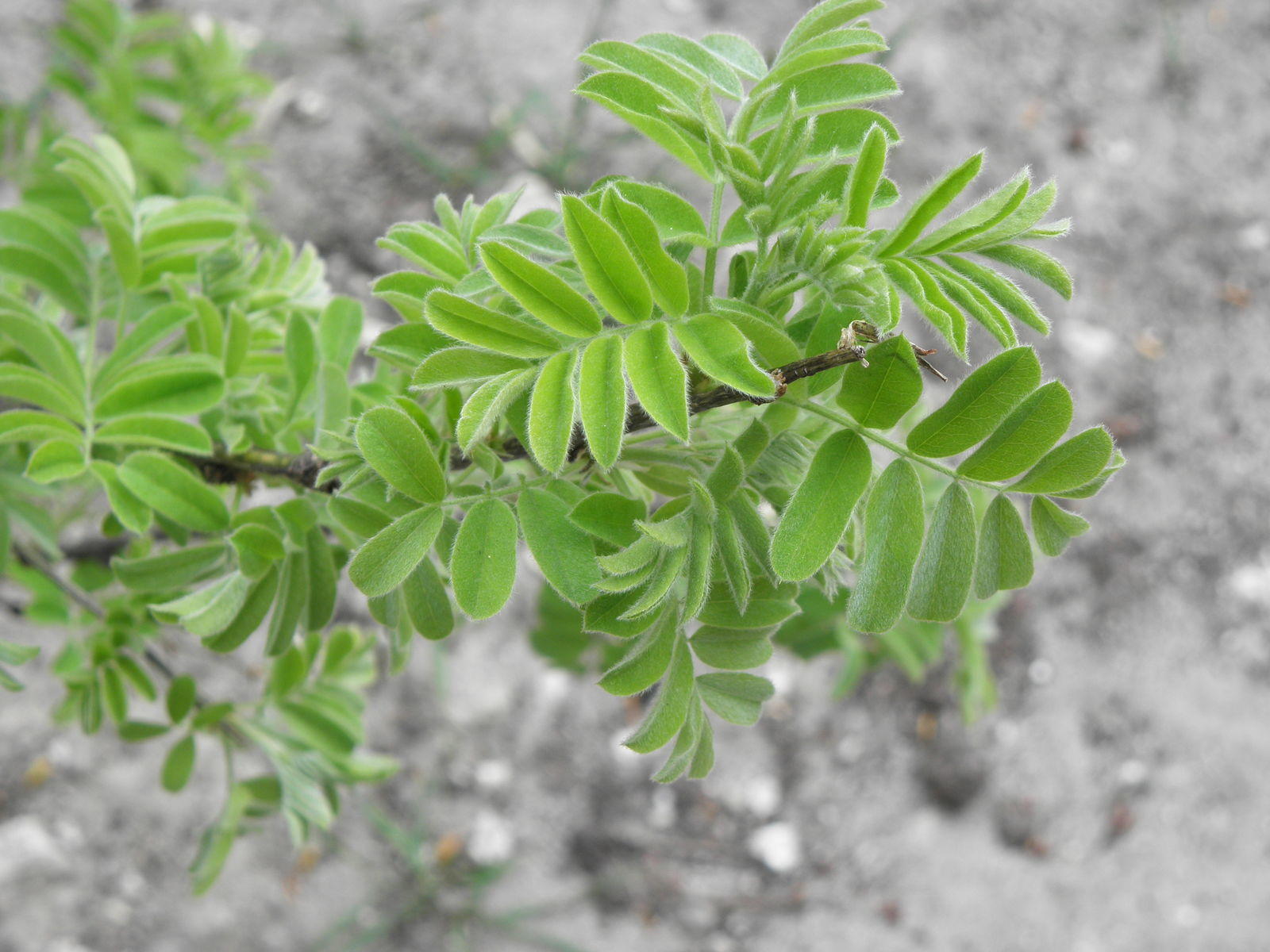
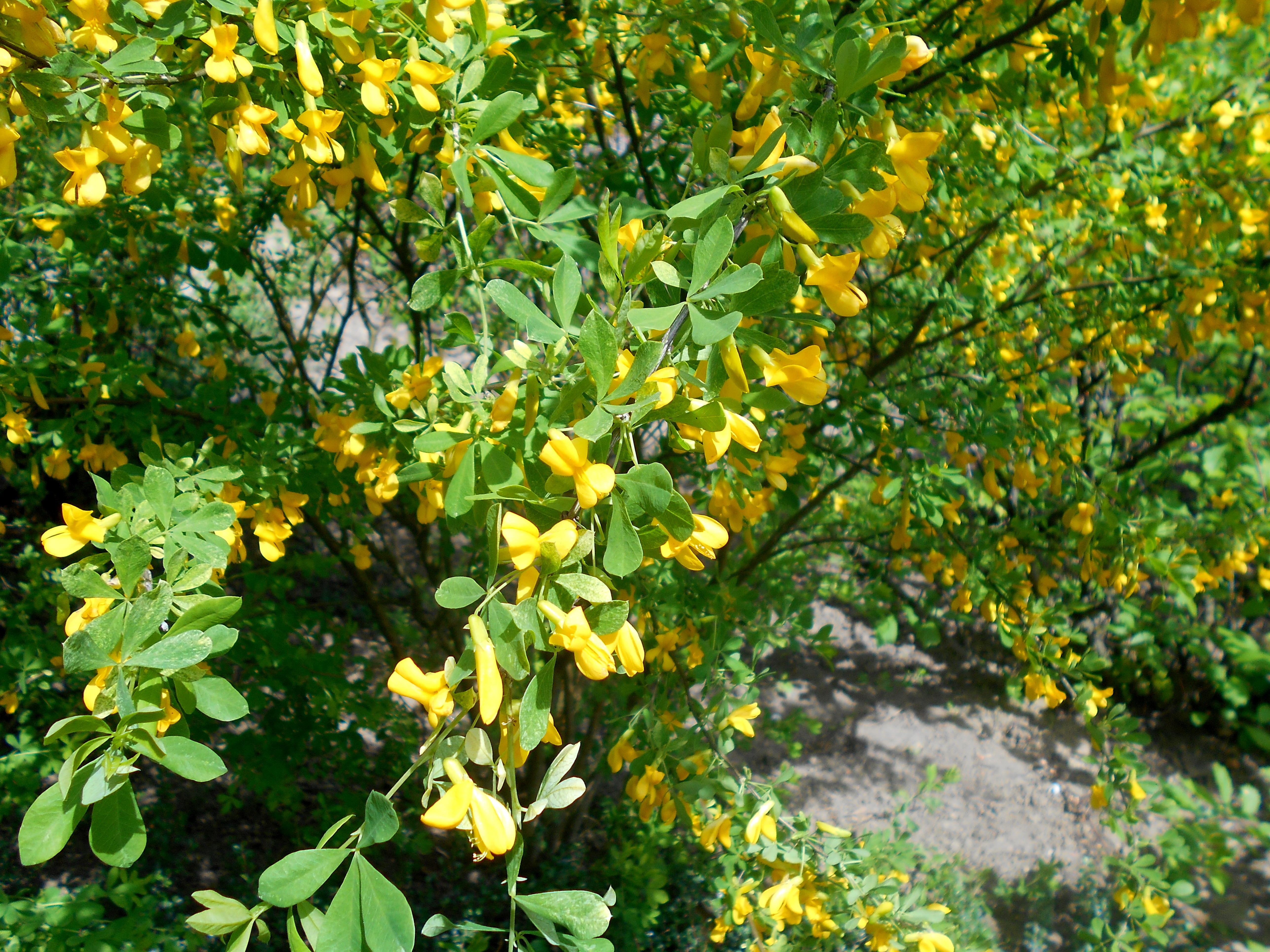
CARAGANA ARBORESCENS
- Leaves & Flowers
Caragana, a legume, has a pod-like fruit which contains many seeds. These ripen in July. The leaves vary from light green to dark green and are alternate and compound with many small leaflets. Somewhat showy, small, yellow flowers bloom in May or June.
- Fruits:
This species produces berries that are popular for jam-making humans, plus it has bright red (female plants only) fruit which matures in fall.
- Fall Color:
- Growth Habit & Hardiness
Caragana can reach a height of 12 feet on the most favorable sites. Typically, it has a moderate growth rate. It is recommended for planting in the outer rows of multi-row plantings. It is suitable for planting in single-row field windbreaks where a dense, short barrier is desired. This plant is marginally adapted to moderate summer temperatures and is a winter-hardy, drought-tolerant, long-lived, medium to tall shrub. It can grow well on a wide range of soils, it does not perform well on very droughty sandy soils or wet soils. During the summer months of extremely dry years this species may drop its leaves.
- Wildlife Value:
It is used for nesting by several songbirds. The seeds are occasionally eaten by a few songbirds. The plant is not a preferred food for browsing animals.
Cotoneaster
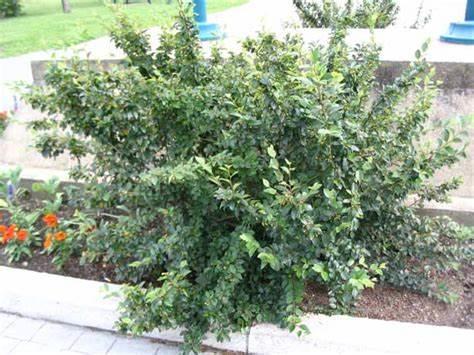
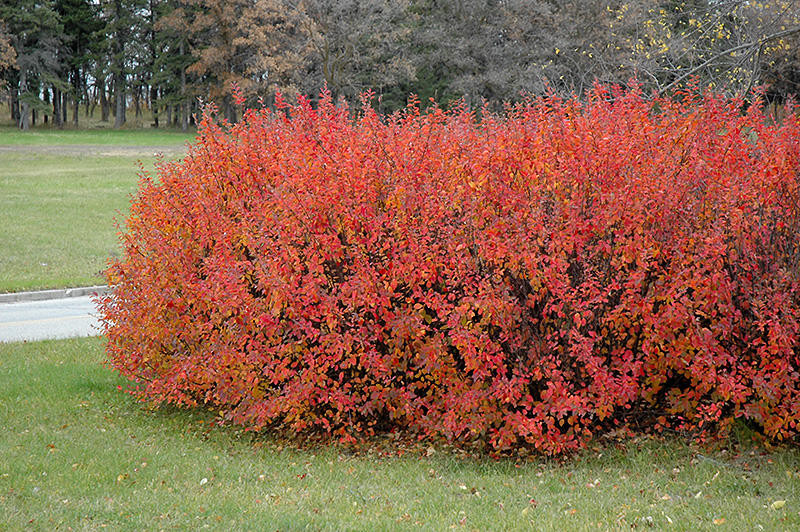
Rose Family (Rosaceae)
- Leaves & Flowers
Cotoneaster is a
multi-branched shrub with a broad crown. It is 2m tall at maturity. The branchlets are grayish brown,
covered with dense hairs, becoming more glabrous at maturity. Leaves are simple, alternate, broadly ovate to almost circular, 2 to 4 cm long and 1 to 3 cm wide. They are gray-green above, gray pubescent below, and are untoothed. Buds are brown to pale gray and less than 1 cm long. Two to five flowers are borne on inflorescences that are 1.5 to 2.5 cm long. The flowers are pinkish-white and approximately 8 mm in diameter. The fruit is a dark red berry, 6 to 8 mm in diameter. Cotoneaster blooms in May and June and sets fruit in August and September.
- Fruits:
This species produces berries that are popular for jam-making humans, plus it has bright red (female plants only) fruit which matures in fall.
- Fall Color:
The leaves have an orangish yellow cast in the fall.
- Growth Habit & Hardiness
The Buffaloberry, sometimes called a Bullberry, is a real reclamation champ. It is very adaptable to poor soil types, drought-tolerant, excellent at erosion control, and quite sturdy in high winds. Since it even grows in zones 3-9 it is commonly used in reclamation projects. The Buffaloberry is a deciduous small tree/ tall shrub that naturally forms an 8-14ft tall thicket which many enjoy as a natural windbreak, hedge, or privacy fence. It does produce suckers which can mean your thicket will continue to expand or you may choose to cut out the new growth. This hardy shrub tolerates soil that most plants considered infertile because it has a unique ability to fix and assimilate atmospheric nitrogen. This means that this plant not only does well in dry, moderately alkaline, and saline soils but it is actually a soil-fixer! (Grows in soil PH 5.5-8.) Although drought-tolerant once established it does prefer moist, well-draining soils or regular watering in dry areas. It also loves full sun but will tolerate part shade. It typically grows to 12’ tall and as wide, but will occasionally soar to an almost tree-like 18’ tall.
Cotoneaster is not adapted to alkaline soils (as well as saline soils), but other sources suggest that alkaline soils are preferred. It is adapted to a variety of soil textures. Growth is slow on very dry and poorly drained soils. Cotoneaster does well in full and partial sun.
- Wildlife Value:
Many bird species consume cotoneaster fruit in autumn. The plant also offers protection and
habitat to small wildlife species.
Golden Current Berry
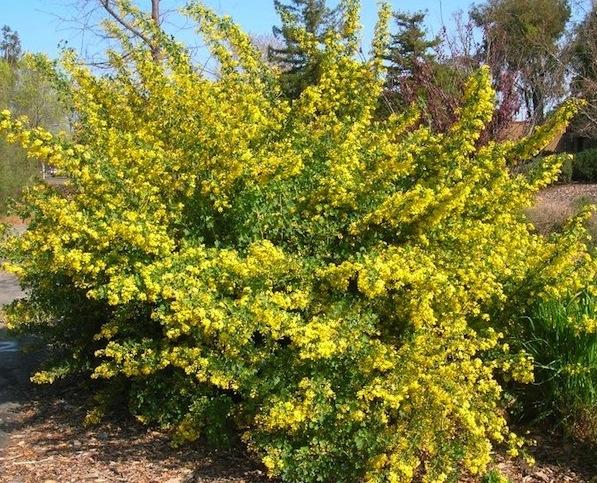
RIBES AUREUM
Also known as: Buffalo Currant, Clove Currant, Spicebush
- Leaves & Flowers
Golden Currant has been widely cultivated for its ornamental landscape value. It’s trumpet-shaped golden-yellow flowers, unique spicy-sweet fragrance, and petite stature make it a wonderful backyard companion. Even the elliptical berries, dangling in rows from outstretched, arching limbs, are ornamental - ranging from yellow to orange to red to black at maturity.
- Fruits:
Flowers have a spicy-sweet fragrance like clove and vanilla and make a decorative addition to Spring salads. The berries are an excellent native food source by themselves and are also useful in recipes for their wonderful flavor sweetened into jams, jellies, pies, or even currant ice cream. Berries contain healthy antioxidants, anthocyanins, vitamins and minerals.
- Growth Habit & Hardiness
Light Requirements: It is shade tolerant and grows well in any soil. It is very drought tolerant, but enjoys moisture. It fruits better in sun. It is self-fertile, but cross-pollination increases yields. It well bear fruit in 3 years and it blooms in early spring with a mid summer fruit harvest. Mature size is 4-6'. Golden Currant’s wild home is vast and varied; it can thrive in mountain meadows, coniferous forests, dry prairies, along streams, or even on the coast. It can be found alongside Black Gooseberry, under White or Black Oak and California Pine Nut, and above a medley of native wildflowers. It’s adapted to regular low-intensity fires that inspired it to regenerate from it’s base.
There are over 25 species of Ribes in California alone, and Golden Currant is among the most drought tolerant.
- Fall Color:
After the berries mature, the maple-like Autumn leaves put out a great show of color, turning slowly yellow to red before they drop.
- Wildlife Value:
Currants are a great wildlife attractor, as well. They are a valuable food source for songbirds, bumblebees, hummingbirds, butterflies, and other native wildlife.
Juneberries / Service berries
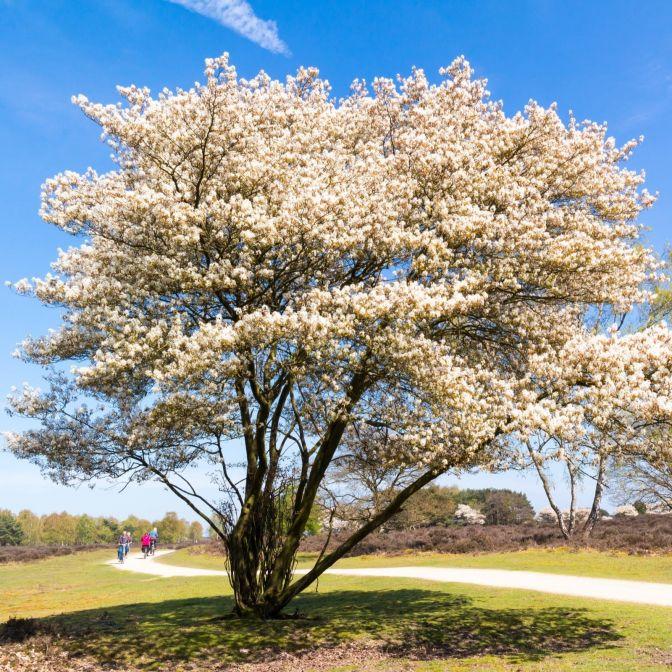
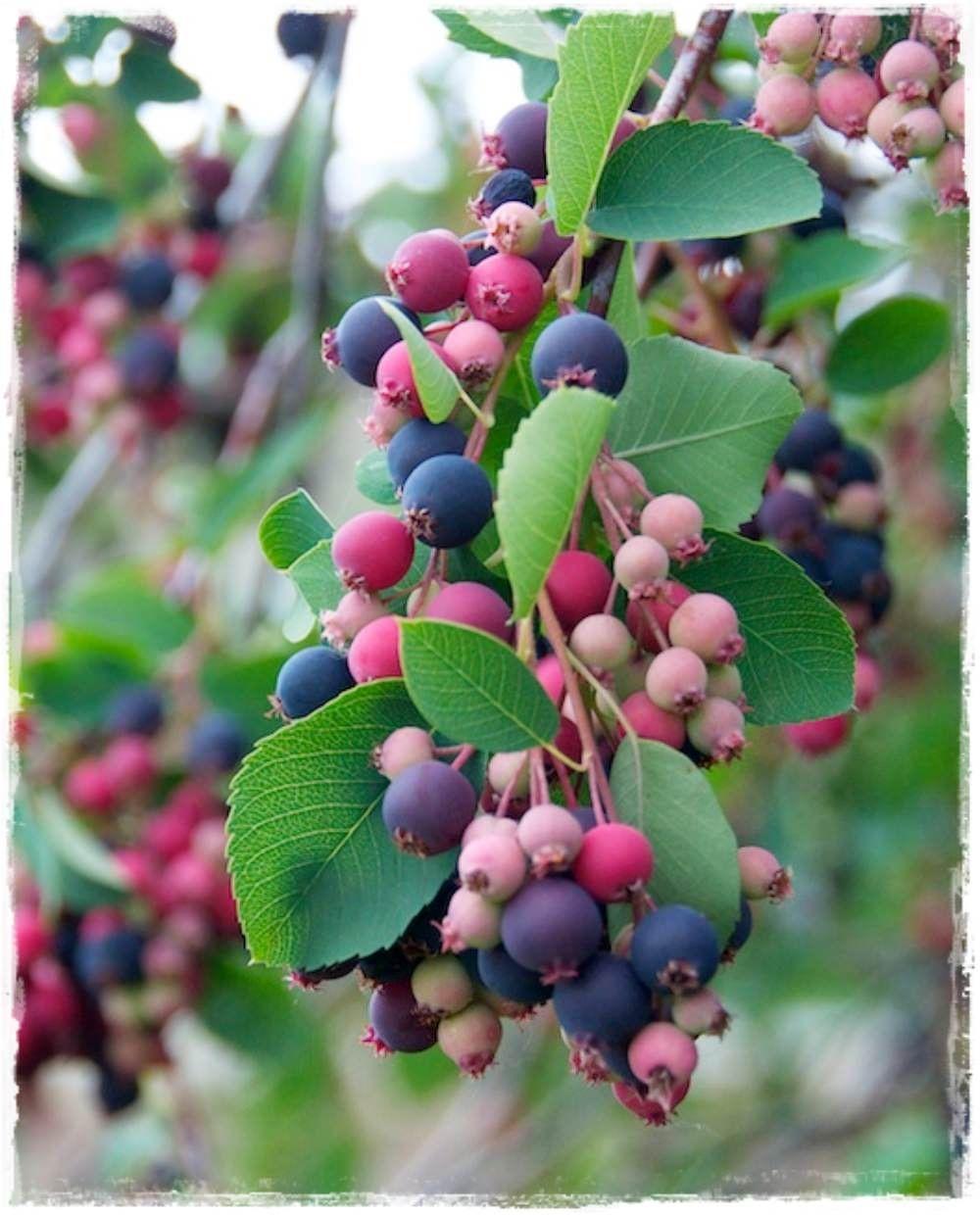
AMELANCHIER
also known as shadbush, shadwood or shadblow, serviceberry or sarvisberry, juneberry, saskatoon, sugarplum, wild-plum or chuckley pear,
- Leaves & Flowers
Juneberry provides year-round interest in white spring flowers, smooth gray bark, and edible purple fruit.- Fruits:
Juneberry fruits look like medium-sized blueberries, but the juneberry is actually much more closely related to apples and pears. Outstanding fruit that is highly praised for flavor.
- Fall Color:
June berries have yellow to red fall foliage,
- Growth Habit & Hardiness
Juneberries thrive in a wide range of soil types, including both rich lime and acidic soils as it is not picky about soil type.
- Wildlife Value:
June Berries are a food source for many animals and birds.
Lilac
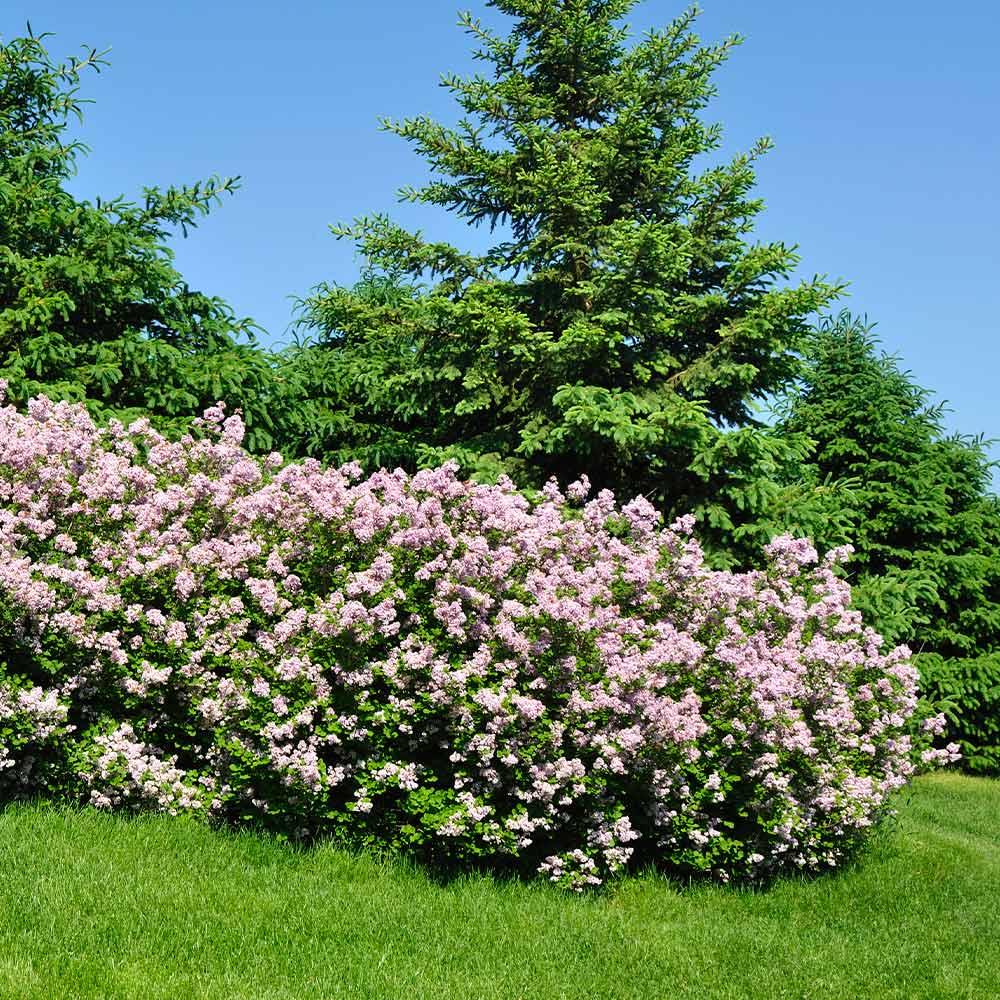
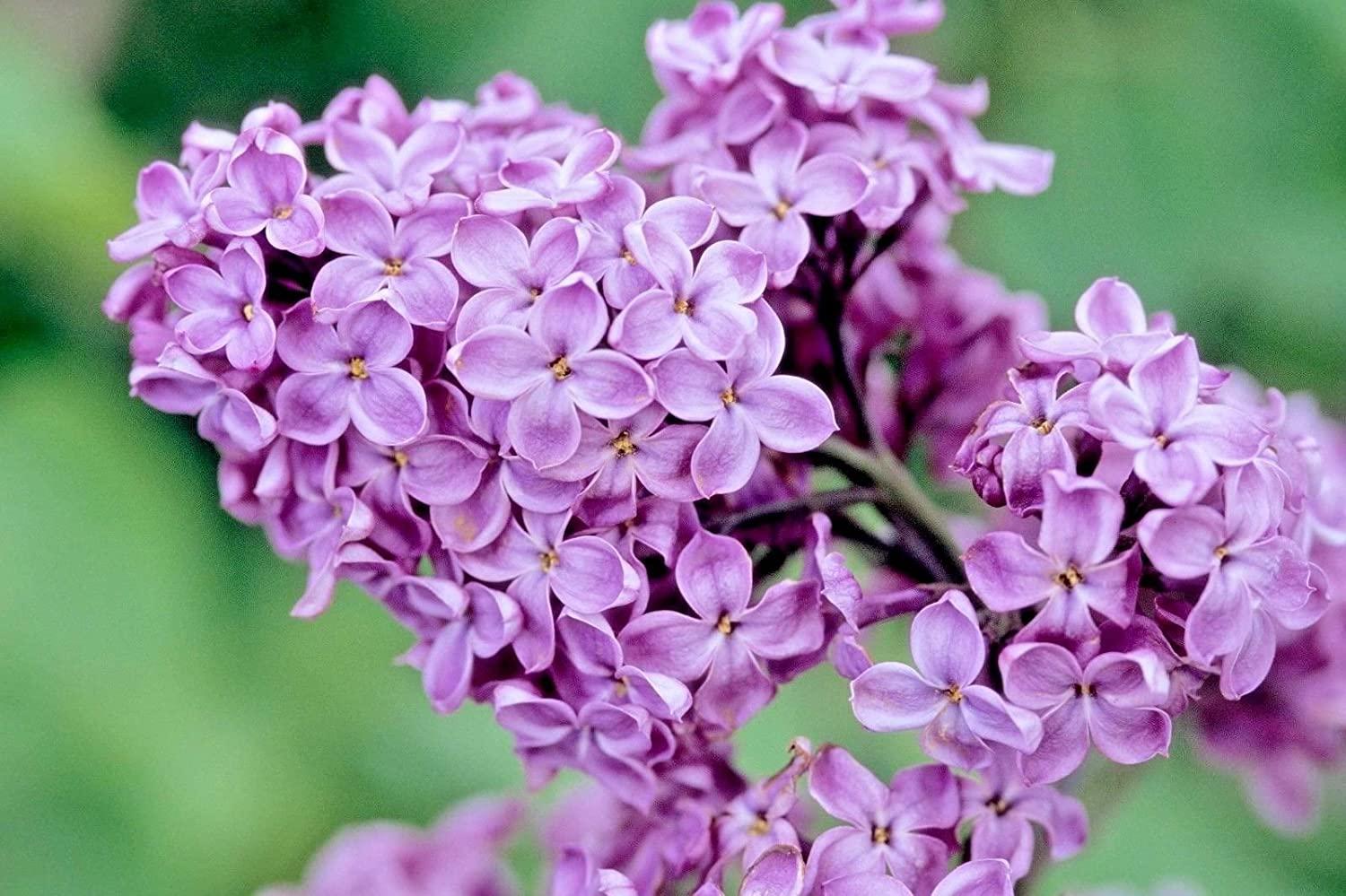
Oleaceae
- Leaves & Flowers
Flowers are fragrant and come in many colors, such as pink, purple, white and a few others. The leaves are multi-stemmed, Oval shaped with upright blossoms.
- Fruits:
This shrub does not have fruits.
- Growth Habit & Hardiness
Lilacs can be medium sized shrubs (5-8 feet), or large shrubs (more than 8 feet). They like full sun (6 hrs direct light daily) Hardiness zones 3-7. They prefer acid soil, that is moist and well-drained. The common lilac is an old-fashioned, long-lived, and well-loved lilac best known for its fragrant flowers. It is extremely hardy and thrives with little care which makes it a lovely shrub for a specimen planting, in masses, screens, hedges, or mixed in shrub borders. The May blooming flowers are typically purple to lilac but cultivars also come in magenta, pink and white. They have a moderate Growth rate
Moderate
- Fall Color:
The multi flower clusters bloom in the mid spring, late spring and early fall.
- Wildlife Value:
Lilacs attract hummingbirds and butterflies.
Mckenzie Chokeberry
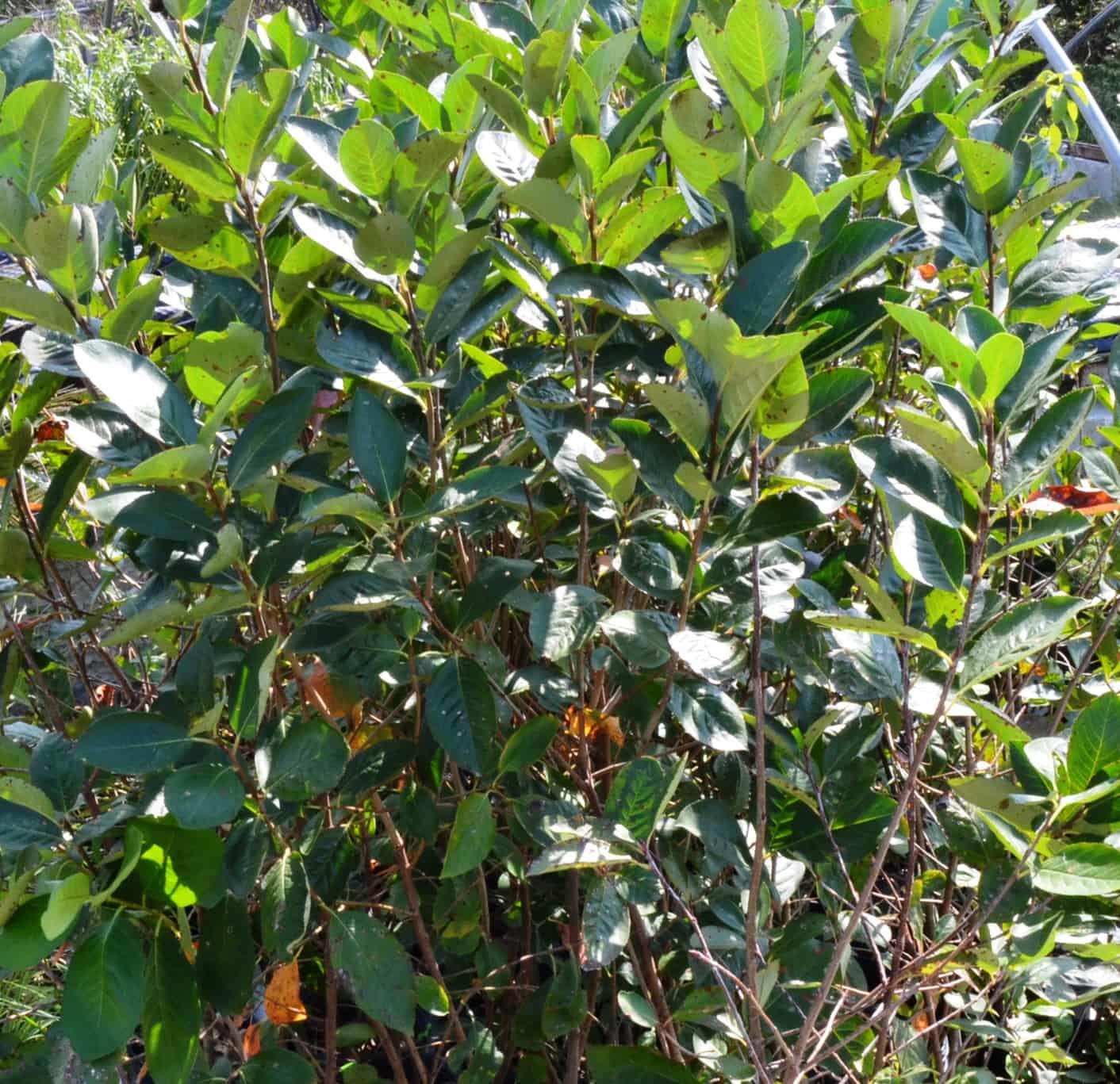
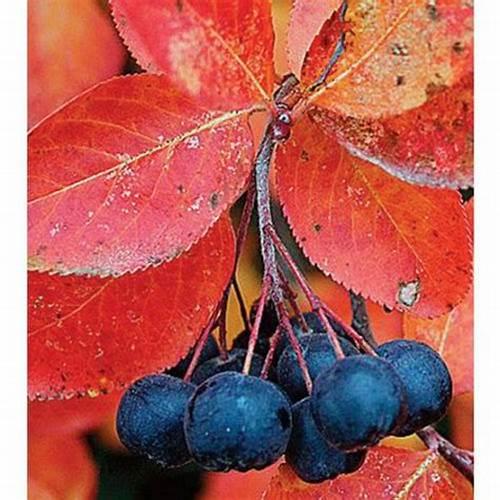
ROSACEAE
- Leaves & Flowers
It is noted for its 5-6 flowered clusters of white 5-petaled spring (May) flowers, glossy elliptic to obovate dark green leaves (to 2-3” long) with finely toothed margins, black autumn berries (blueberry size) and purple/red fall color.
- Fruits:
The common name of chokeberry is in reference to the tart and bitter taste of the fruits which are edible but so astringent as to cause choking in most of those who try. Fruits are sometimes used to make tasty jams and jellies.
- Fall Color:
The mix of fall colors becomes a mixture of yellow, orange, and red.
- Growth Habit & Hardiness
Easily grown in average, medium moisture, well-drained soils in full sun to part shade. Plants have a wide range of soil tolerance including boggy soils. Best fruit production usually occurs in full sun. Remove root suckers to prevent colonial spread unless desired. Group or mass in shrub borders, small gardens or open woodland areas. Ability to withstand wet conditions makes it suitable for growing on the margins of ponds or streams. Excellent addition to naturalized areas where its suckering, colonial growth habit does not need to be restrained.
- Wildlife Value:
This tree's berries attract birds nest that also nest in its branches.
Nanking Cherry Tree
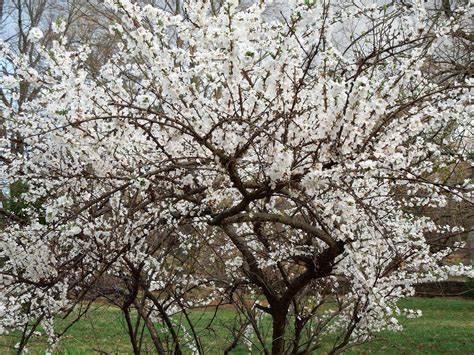
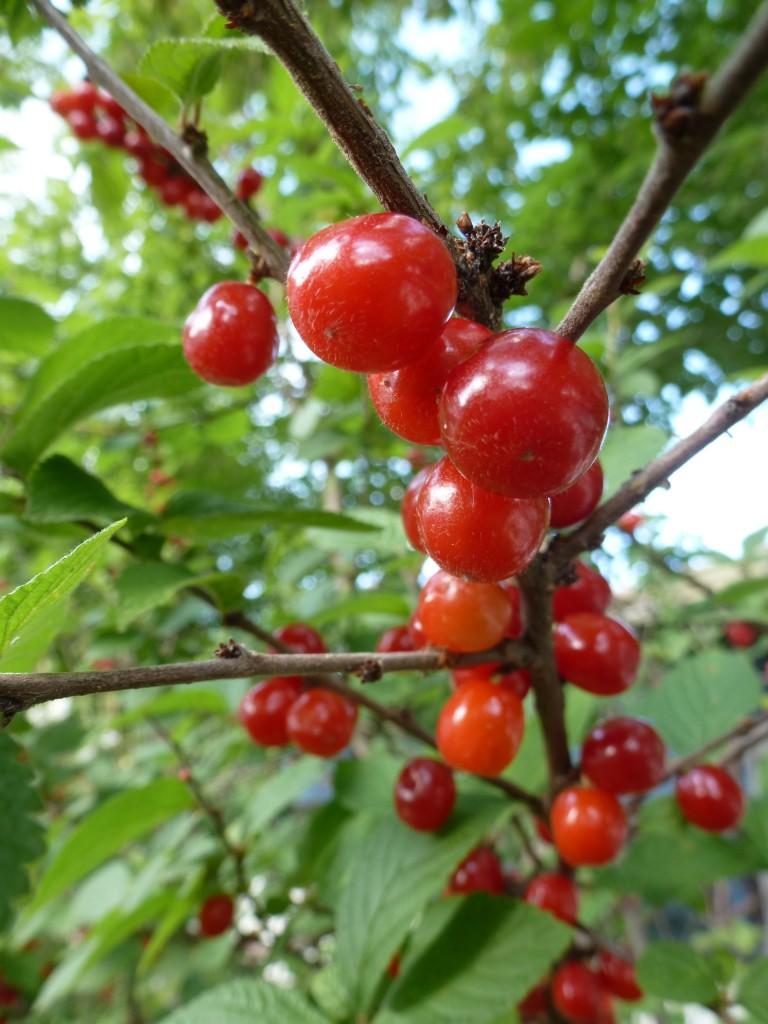
Prunus tomentosa
Common names include Nanjing cherry, Korean cherry, Manchu cherry, downy cherry, Shanghai cherry, Ando cherry, mountain cherry, Chinese bush cherry, and Chinese dwarf cherry
- Leaves & Flowers
This a large deciduous tree typically growing 75-100’ (less frequently to 125’) tall with and an oval to rounded crown. This tree features pinnately compound, alternate leaves that are 12–24" in length and consist of 15–23 dark green leaflets that are 2–5" long; the leaflets are finely toothed
- Fruits:
Nanking cherries can be eaten fresh, and the juice makes a refreshing drink and a beautiful, clear jelly. The fruit can also be used like any other tart cherry.
- Fall Color:
Nanking Cherry bushes have ordinary non vibrant yellow leaves in the fall.
- Growth Habit & Hardiness
Early and productive, it has sweetly scented spring flowers that turn in to large crops of sweet fruit in July. Makes a wonderful, tasty hedge. Cold hardy and wind resistant. Grows and produces best in full sun in well-drained soil. For best fruiting, plant two or more. Ideal for full sun, it can be used as a foundation plant, a fruitful hedge, or even grown in containers.
- Wildlife Value:
Nanking Cherry is a food source for many animals and birds.
Native Plum
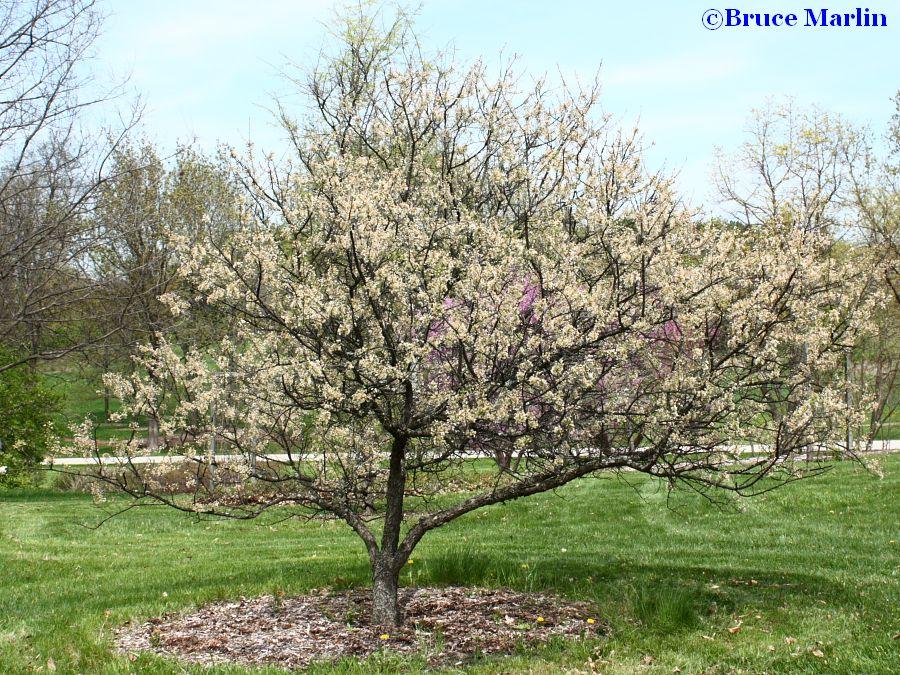
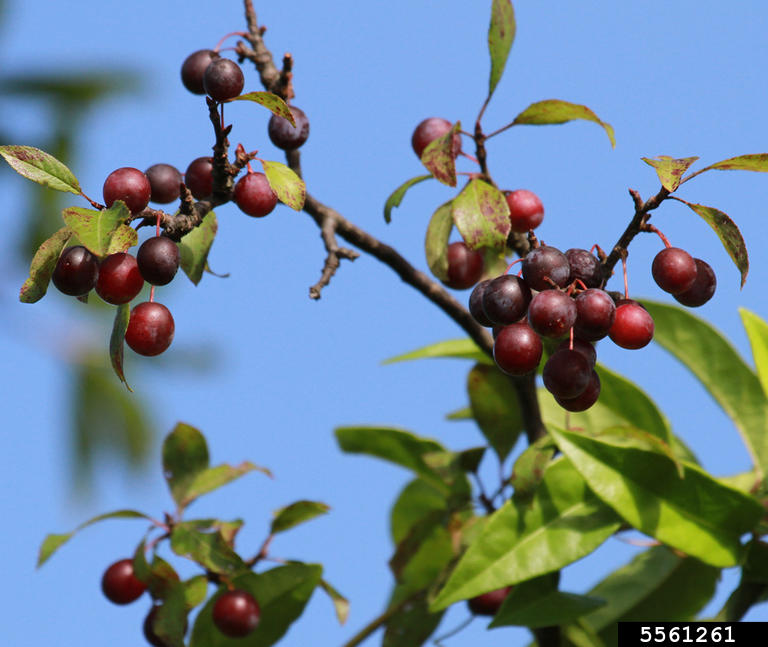
Prunus americana
- Leaves & Flowers
A thicket-forming shrub or small tree with short trunk, many spreading branches, broad crown, showy large white flowers, and red plums. American plum is a small, understory tree to 35 ft. with fragrant, white flowers in showy, flat-topped clusters occurring before the leaves in spring. The short, crooked trunk - with scaly, black bark - supports a graceful, open crown.
- Fruits:
Produces small, reddish-purple plums that ripen in July and August The fruit can also be used like any other tart berry. The fruit that follows ripens to a shiny, bright red in August or September.
- Fall Color:
Fall foliage ranges from electric red to pale yellow.
- Growth Habit & Hardiness
American Plum is also grown for erosion control, spreading by root sprouts. These trees like moist, rich, well-drained loams.
- Wildlife Value:
Native Plum is a food source for many animals and birds. Attracts songbirds, pollinators, wild turkeys, qual, and deer.
Warning: Plants has thrones or prickles. CAUTION: All parts of this tree, except the flesh and the skin of the plums, contains the toxin hydrocyanic acid ( Kershaw). This is toxic to animals and people.
Sand Cherry
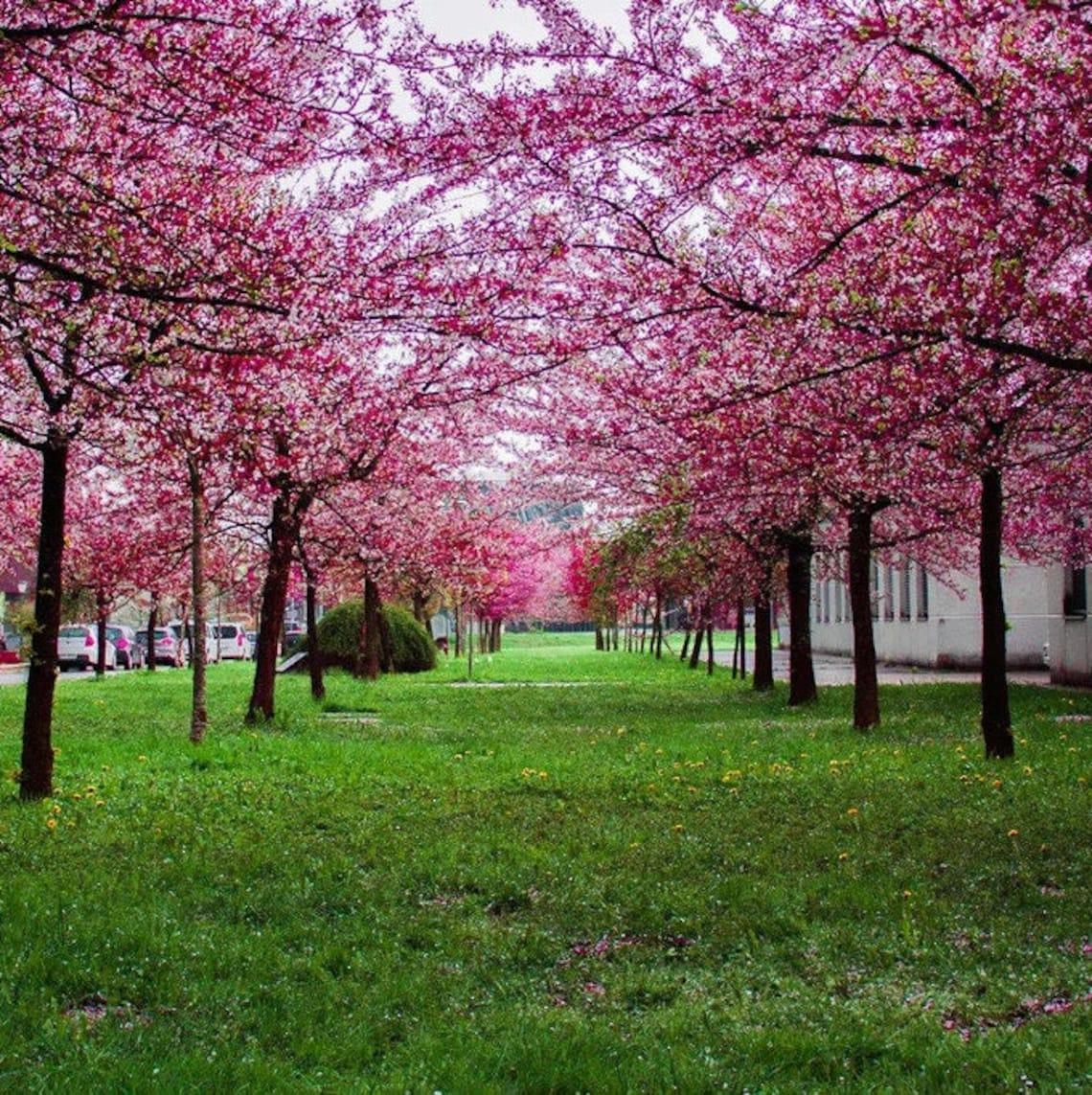
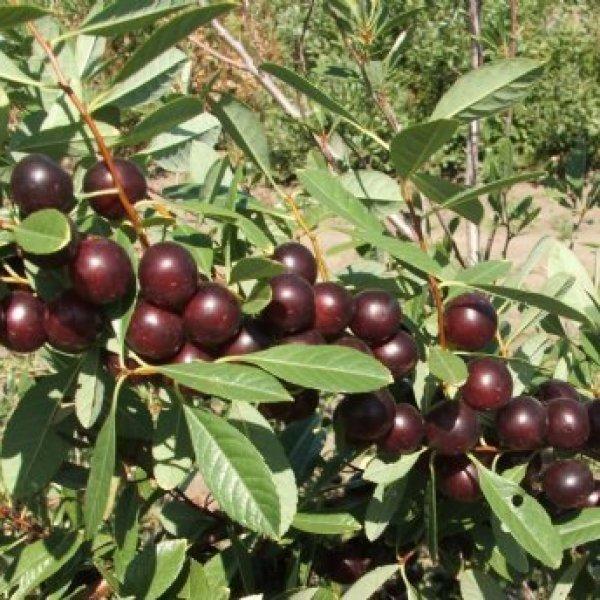
Prunus x cistena
- Leaves & Flowers
It produces fragrant light pink to white flowers from late April to early May. Features simple leaves with an intense reddish-purple coloring that lasts all summer
- Fruits:
Yields small, sour fruit that is blackish-purple in color and sparse in quantity. While there will never be a large cherry crop, the fruit is commonly used for making jams, jellies, and pie.
- Fall Color:
The mix of fall colors becomes a riotous mixture of yellow, orange, and red!
- Growth Habit & Hardiness
This tree tolerates many soils, grows in a rounded shape and it is winter-hardy. This is a very hardy flowering landscape specimen with reddish-purple foliage that keeps its unique color all summer. Because of this, the purple leaf sand cherry makes an excellent contrast tree. It can be planted close to paved surfaces and near utility lines and can also be used as a deciduous hedge.
- Wildlife Value:
This tree is an important source of food for many small birds and mammals including robins, cardinals and coyotes. Birds nest in its branches.
CAUTION: All parts of this tree, except the flesh and the skin of the cherries, contains the toxin hydrocyanic acid ( Kershaw). This is toxic to animals and people.
Sumac Tree
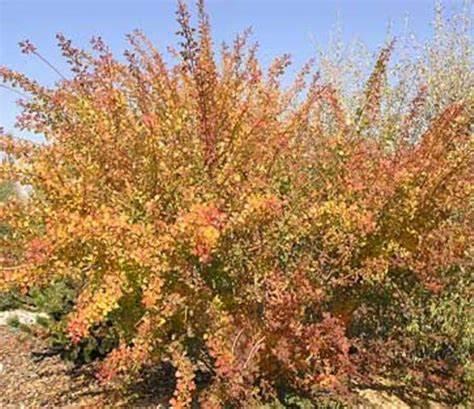
Rhus glabra
- Leaves & Flowers
Most sumac species have compound, pinnate leaves (leaflets arranged along a central stem), but some have simple or trifoliate leaves.
Sumac flowers are typically small, greenish, creamy white, or red and are found in dense panicles or spikes.
- Fruits:
The fruits are reddish, thin-fleshed drupes covered in hairs, often forming dense clusters at branch tips.
- Growth Habit & Hardiness
- Sumac trees are known for spreading by suckering, which can lead to the formation of large clonal colonies.
They are generally hardy and drought-tolerant, making them suitable for various conditions.
- Fall Color:
Sumac trees typically exhibit bright yellow, orange, or red fall foliage.
- Wildlife Value:
The fruits are a favorite food source for birds, and the trees provide shelter and food for other wildlife.
Important Note: It's crucial to distinguish between edible and poisonous sumac species, particularly poison sumac, which contains the same irritant as poison ivy.
Poison sumac has smooth, non-toothed leaflets, while many true sumacs have toothed or scalloped leaflets. Poison sumac produces white or light-green berries that droop, whereas true sumacs, like staghorn sumac, have red, upright berries